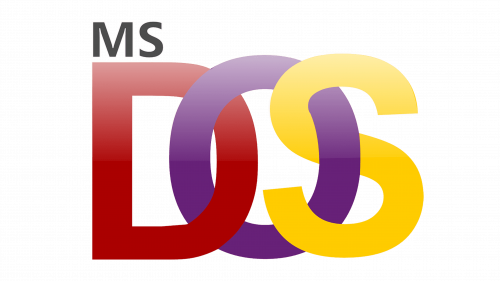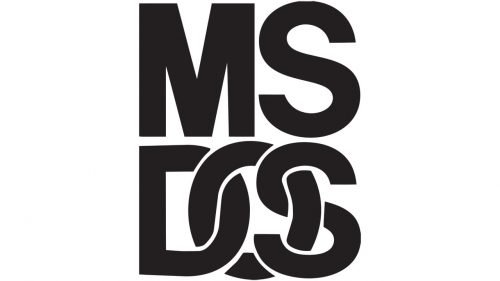MS-DOS was the most popular operating system among IBM personal computers’ users from 1980 until the mid-nineties of the last century when it was replaced by new systems of Widows family. It was created as 86-DOS by Tim Paterson, a programming specialist of Seattle Computer Products company of Seattle, Washington, the USA. In July 1981, Microsoft purchased the rights to this system, modified it according to IBM requirements, and renamed it as “MS-DOS”. From that time, the companies Microsoft and IBM continued developing the operating system in cooperation with each other. They released eight main and about twenty intermediate modifications of the software, which even worked jointly with the early versions of Windows until DOS was completely replaced by the latter.
The logo, its meaning and history
The MS-DOS logotype was created at the outset of the existence of the operating system in 1981 and was used until 2000 appearing on the packaging and documents of the product. The main idea of the logo has never been changed throughout its history. It is the brand name “MS DOS” written in block letters and in two lines. The upper line had the “MS” part of the wordmark with the letters “DOS” placed under it. The letters “DOS” are intertwined like links in a chain.
The colour palette also has been mostly the same. Initially, the letters “MS” were in white, the “D” was in rose-red, the “O” was purple and the “S” had a bumblebee yellow tone. The wordmark used to be on black background. Later on, the colour of the letters “MS” was changed to a mixture of light and dark grey tones which started to give the logo a 3-D look, which was supported by new, broken silhouettes of the letters. Also, the letter ” O ” has become two-coloured, now it has violet and cobalt blue checkers.
The abbreviation MS-DOS stands for “Microsoft Disk Operating System” meaning that the system runs from a hard disk drive of the computer controlling its hardware and peripheral devices as well as allowing other programmes to function. For many PC users, it meant an operating system that required almost professional qualification of the operator compared to the user-friendly Windows.








